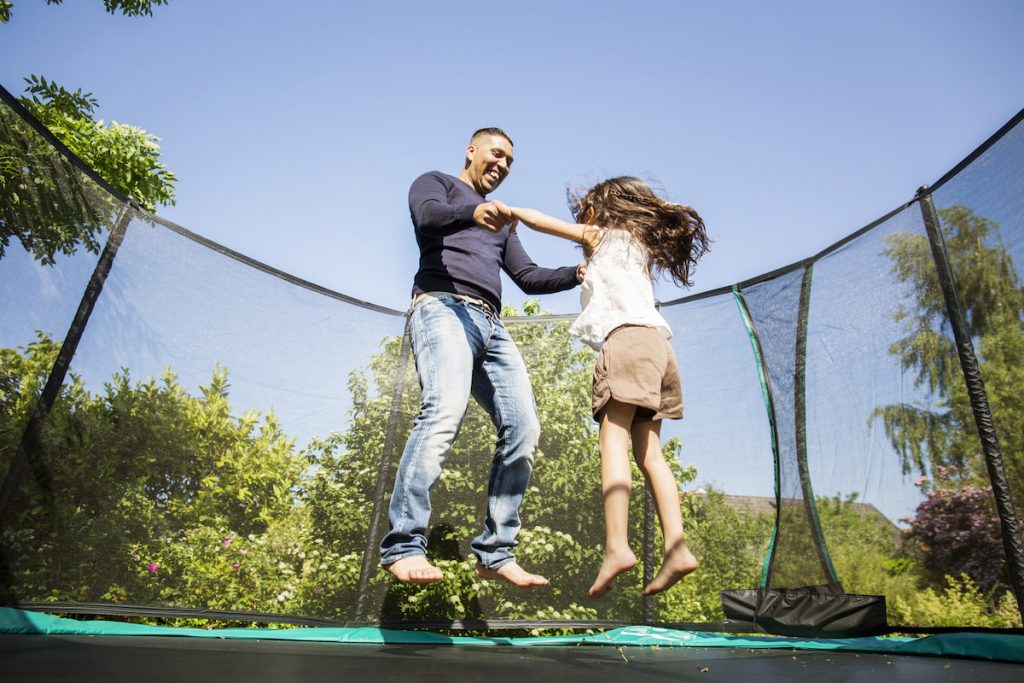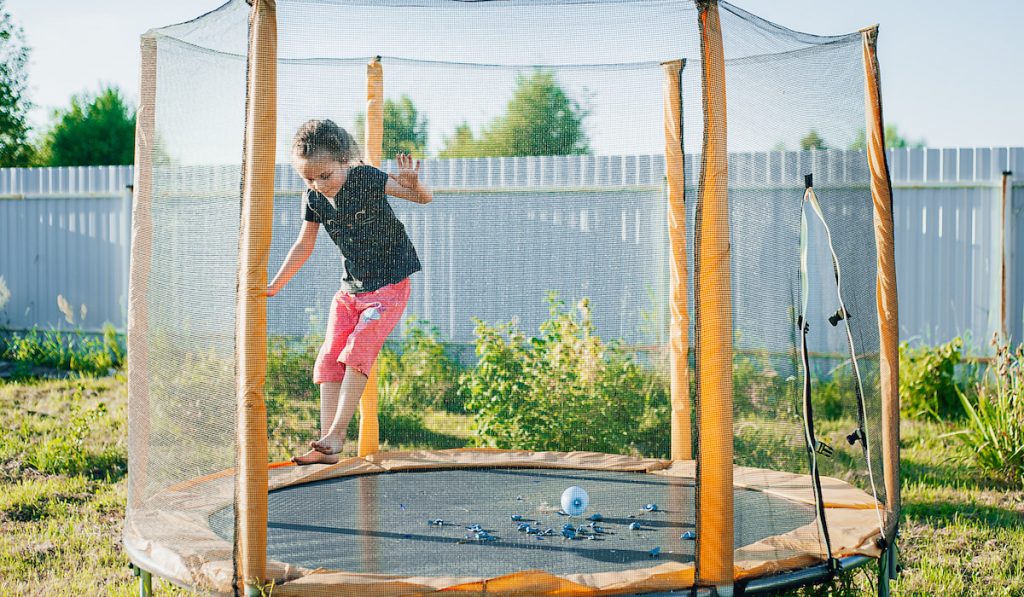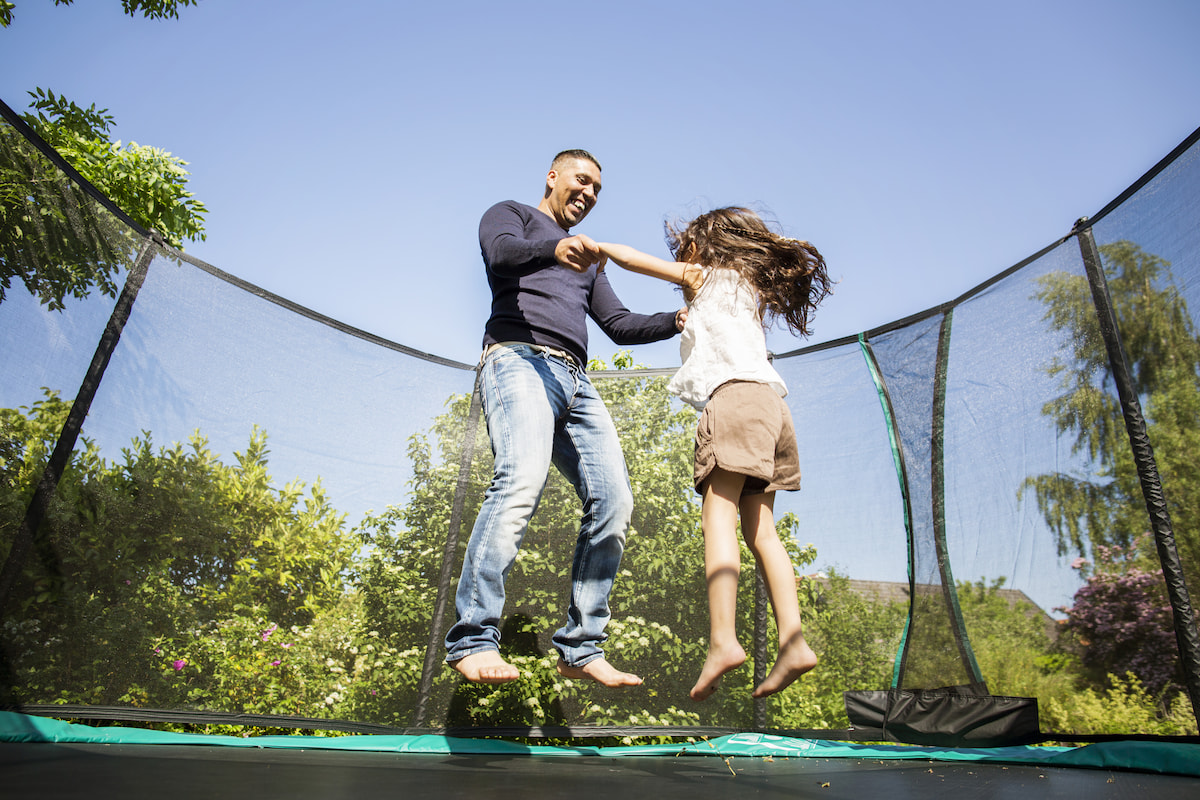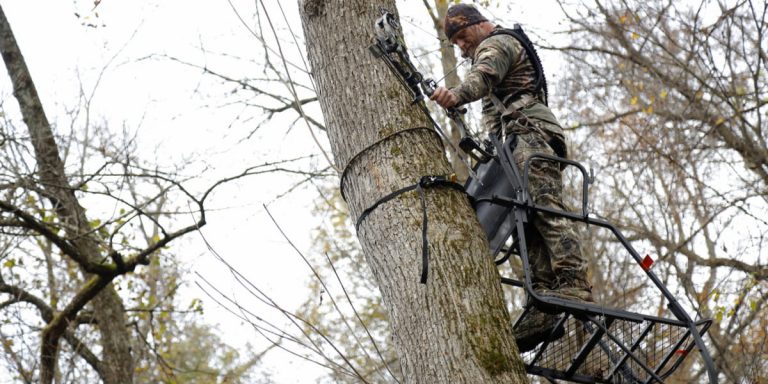How Much Weight Can a Trampoline Hold?
We all know about the strict rules adults can have with their kids’ trampolines. As a kid, my parents would never buy a trampoline, but when we’d go over to a friend’s or cousin’s house, I’d be delighted that they had a trampoline in the backyard, running out immediately with beautiful images of an afternoon spent bouncing around in my head.
However, one of the parents of the house would inevitably stop us before we got to the trampoline and state the ground rules. Trampolines are a lot of fun, but they can also be dangerous under certain circumstances. Safety should always be the number one concern.
One of those rules always stated was the number of people allowed on the trampoline at a time. Many times it was only three, despite there being more than three kids present, but of course, it varied depending on the parents and the size of the trampoline.

But the fact remains: why were only three people allowed on the tramp at a time?
Well, a couple of reasons. One is the sheer number of bodies that can fit on the trampoline.
You could pack quite a few in there, but when it comes to jumping, that can be a disaster. Kids landing on other kids, kicking each other in the face, stepping on hands or heads, knocking each other off the sides, bouncing each other dangerously high—especially if your trampoline is not netted—all of these are reasons why he number should only be a few.
Everyone should be able to keep a safe distance from each other when jumping. If someone is injured, especially if it is a guest, there can be repercussions.
But the other reason is the weight limit. Trampolines all have a weight limit, and depending on the age and size of those jumping, you have to calculate how many people can jump on the trampoline with it still being able to bounce you. If there is too much weight on it, the trampoline won’t bounce.
To decide how many kids can jump at a time, first, you’ll need to know the weight limit of the trampoline you purchased, then loosely approximate the number of kids who can jump on it (loosely meaning don’t let it become exactly capacity, leave lots of cushion room for safety). Read on to learn more about how much weight a trampoline can hold.

The Best Type of Trampoline for Recreational Use
Honestly, regardless of who’s using the trampoline, it’s best to get the most supportive trampolines so that you never have to worry about who uses your trampoline, whether it’s kids or adults.
Some trampolines are designed for adult usage, and as they can handle more weight and pressure, these would be the most sensible options.
Why don’t all manufacturers make their trampolines like this, then? Well, some physics goes into trampolines that may persuade you to consider a lighter one.
Springs are the primary variable in determining weight limits. The springs are what make trampolines bounce.
Trampolines can come with lightweight or heavyweight springs. Naturally, you’d assume you’d want to get the heavyweight springs, right? They’re safer. But the springs are also connected to how much weight it takes to stretch the trampoline.

If you get heavy-duty springs and your little one tries to go out and bounce, they probably won’t get very high and will be disappointed. Heavy-duty springs are great for big guys and gals and bigger groups of people because there will be enough weight for the trampoline to stretch and the springs to do their job.
The frames of all trampolines are similar. Thicker steel will be more commonplace on trampolines suited for bigger people, and thick steel will not be prevalent on trampolines meant for smaller kids.
The trampoline pad also plays a role. Trampolines come in different sizes, depending on how many people you want to be able to fit on the tramp, how big the people are, and how much space you have in your yard to keep one. Most trampolines are made with the same material, waterproof canvas or polypropylene, but those with tighter stitching are better suited for bigger people.
If in purchasing your trampoline, your audience is only small kids, then the lightweight trampoline option is your best to avoid a stiff jumping pad and a lot of disappointment. There are specific kids’ trampolines you can buy for this purpose.
However, if your audience is broader, the safest choice is to buy a trampoline with heavy-duty springs, a thick steel frame, and a tightly woven jumping pad to ensure the trampoline can support the weight, and everyone can jump worry-free.
Trampoline Weight Limits
Depending on the size of the trampoline, the weight limit will differ. There are toddler trampolines that are around eight to ten feet in diameter, and then tramps for any age that go from twelve feet to fourteen to fifteen and sixteen feet in diameter.
Toddler trampolines have a weight limit of a hundred and fifty pounds. Twelve-foot trampolines can hold from two hundred and fifty up to three hundred pounds, and fourteen-foot tramps from two hundred fifty to three hundred fifty. Fifteen and sixteen-foot trampolines can hold up to four hundred and fifty pounds of weight.
These are only generalized amounts, however. Trampolines can be found that are specifically made to carry more weight and can be expanded in size for whatever purpose. Some can hold up to a thousand pounds and have basketball hoops installed so you can play two-on-two and jump up for those layups or slam dunks!
Depending on the number of people you want to be able to jump, look into the sizes and weight limits for trampolines to determine your choice. If you already have one, determine the feet in diameter and then use the above weight estimations to find the weight limit of your current tramp.

Determining Your House Rules for Trampoline Capacity
This is the trickiest part: your trampoline is made with this material; it is this big; it can hold this much weight. But how many people does that mean it can hold until it is no longer bouncy, or worse still, it collapses? We want to overestimate so that there is no danger of this ever happening.
So, look at the weight limit of your trampoline. Then, approximate the weight of those using it, rounding up to the nearest fifty to ensure a cushion of weight.
Finally, subtract those numbers from the weight limit and make sure you don’t hit zero. Even if you hit exactly zero, you may want to knock the house rule down one person just for safety.
This is usually why the number of people allowed on the trampoline at a time is two or three. More, like four or five, are typically allowed when they are smaller, but for teenagers and adults, three or less is the safest bet.
Do your research and calculations, and choose the number of people that will set you at ease. If you find yourself nervously watching them jump from the window, you may have allowed too many people on the trampoline.
The great thing is, it’s your trampoline, so it’s your rules. The kids may groan, but they won’t disobey. Whatever number you feel is safest is the rule you should implement. Stick to that standard and assert it confidently, and it will be respected and followed.






